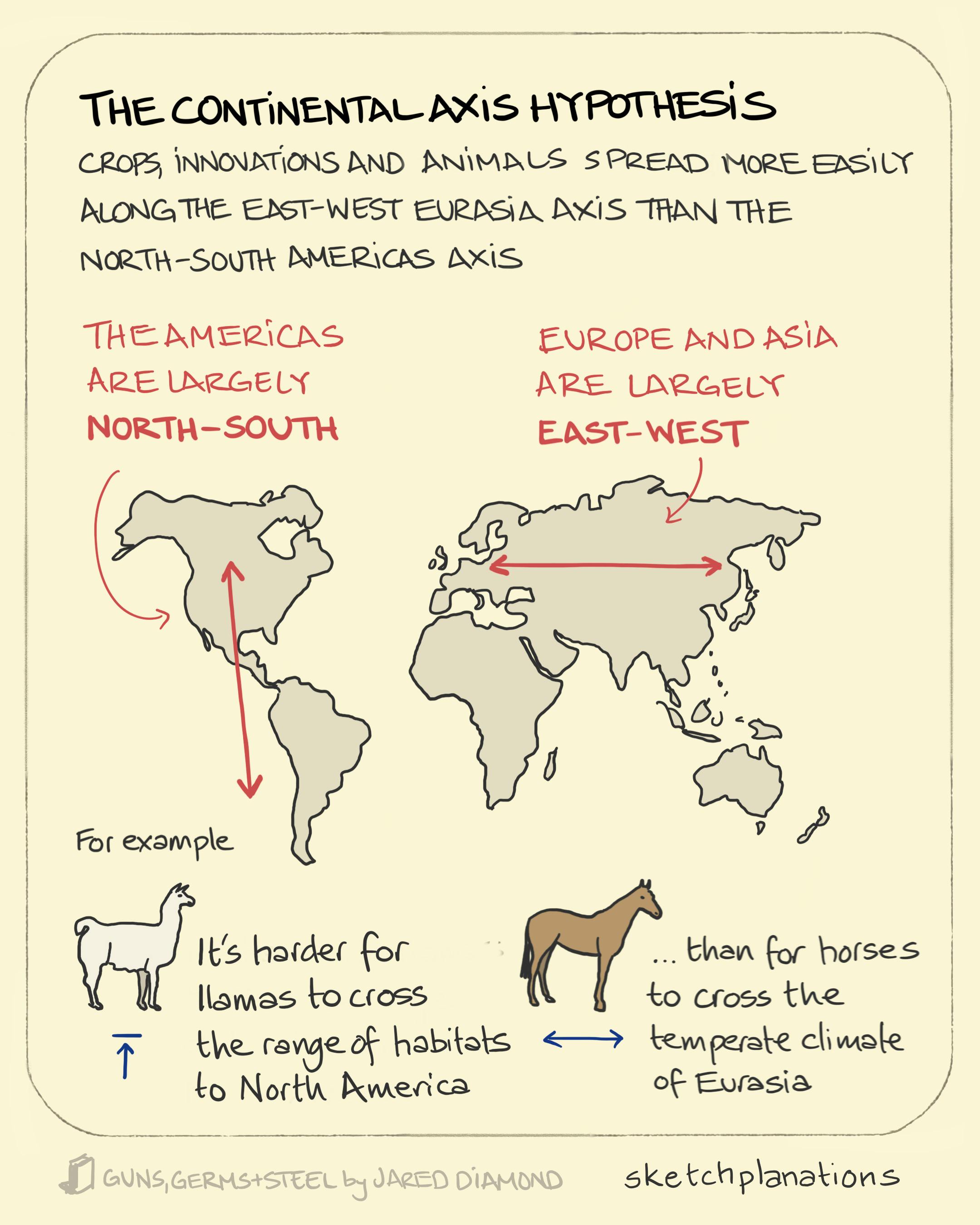The continental axis hypothesis

- Copied!
👇 Get new sketches each week
Jared Diamond’s classic book Guns, Germs and Steel , proposes some remarkable hypotheses about how the pattern of history played out, notably trying to answer the question of why it was generally the Europeans that invaded much of the rest of the world rather than the other way around. One hypothesis, striking in its simplicity if you’ve ever looked at a world map, is the significant contribution of the general orientation of the major continents.
The Americas are largely lined up north–south, while Europe and Asia (Eurasia) are largely lined up east-west. An east-west alignment means the land generally has a more similar climate, day-length and seasonal variations. The general logic of the hypothesis is that the similar latitude of an east–west alignment means animals, crops, as well as travel and trade, more easily spread across the continents than across those with a north–south alignment — of the Americas and Africa — which naturally encounter more different climatic zones.
As a simplified example, horses and other large animals and crops spread throughout the shared temperate latitudes of Eurasia. In contrast, South America’s only large domesticated animal, the thick-coated llama (and related species like the alpaca), couldn’t easily spread to North America through the impassable tropical barrier of the isthmus of Panama. They just aren’t built for it.
There are a lot of viewpoints on the theory, and Diamond includes many more factors of geography and others — like never being able to domesticate the zebra — that go towards answering his question of why Spain invaded the Americas and not vice-versa. But ever since reading his simple hypothesis, available to anyone with a world map, I’ve found it hugely intriguing.

